The thousand-year-old city of Fez is rightly considered to be the spiritual centre of Morocco. This city with rich history is the web of narrow streets and alleys, consisting of houses and bazaars, the plan of which has remained significantly unchangeable for many centuries.
It may sound rather clichéd and banal, but the old city greatly influences people’s senses: the smell of incense, local residents, coffee and various spices fills the air along with noisy buzz of customers and sellers. Beautifully tiled fountains for ablutions are located around the whole city. At the same time, one can see street vendors lining narrow streets with their shopping carts and displaying different goods for sale. Wondering along these bazaars, people can see various crafts, such as woodcarving, which are practiced by the locals.
Fez is undoubtedly that city, which one cannot skip, if you are in Morocco. And we have assembled top 7 must-visit places for you.
1. The Mosque and University of al-Qarawiyyin
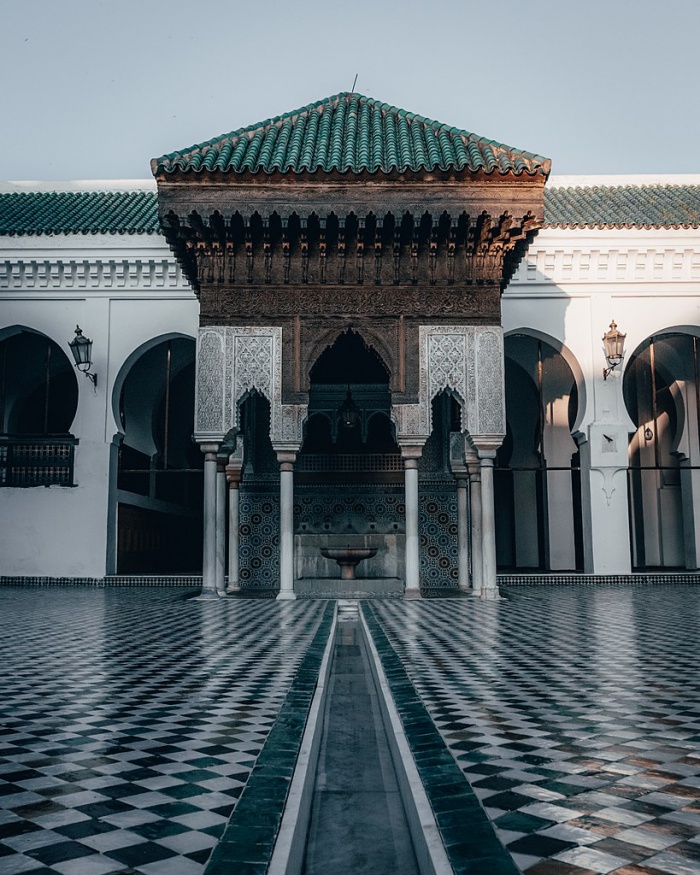
Al-Qarawiyyin is the beating heart of Fez-Medina. Throughout each day an uninterrupted stream of believers passes through its doors. The mosque is so magnificent that in comparison with the general proximity of the buildings erected within Medina it is complicated to look at the mosque itself as a separate construction or clearly distinguish between the beginning of the mosque and its end. From afar, if you look from the surrounding hills of Fez, you can see the mosque with its green pyramidal roof at once, because it stands out from the buildings near it. A lot of doors, which are located on all sides of the building, seem to invite believers inside. Each of the doors is topped with an intricately carved wooden arch. The inner yard is decorated with carved stucco and wood carvings in contrast with bare simple white walls of the mosque interior. It is fascinating that the floor is laid with reed mats instead of the traditional and expected by many people thick carpet, which gives the religious construction a strict appearance. Vivid narrow streets of Medina outside strongly contrast with light and airy space of the inner courtyard of the mosque. Here the feeling of complete peace strikes. Al-Qarawiyyin, founded by Fatima al-Fihri as a madrasah in 859 A.D., eventually has become of the leading centres of education in the Islamic world. Working simultaneously as a mosque and a university, the building has been expanded several times over a certain historical period and nowadays it can accommodate up to 20 000 believers.
2. Al-Attarine Madrasah
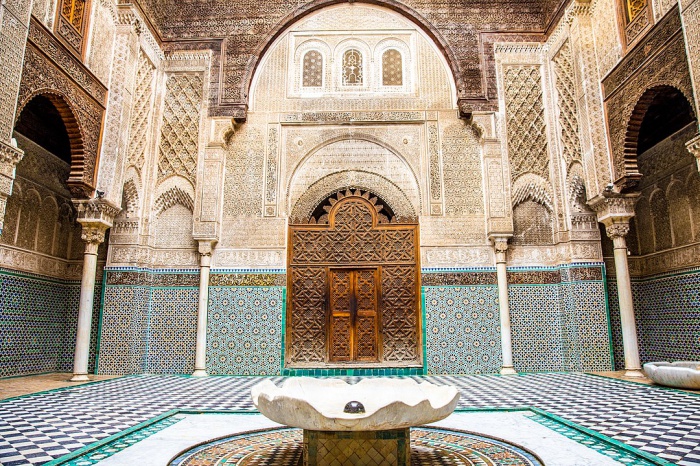
Al-Attarine madrasah is situated at Al-Attarine bazaar, a spice and perfume market, from which it got its name. It was founded by Uthman Abu Said in 1325. In the madrasah, located near Qarawiyyin, there are rooms for education and a small mosque around its central courtyard.
3. Tanners’ Quarter
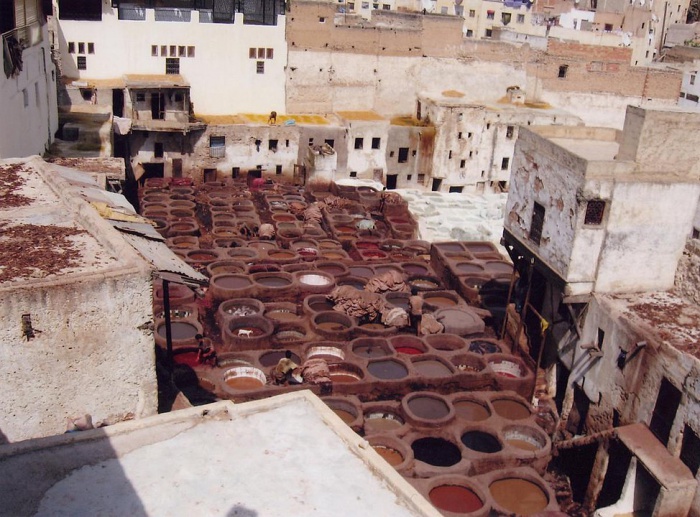
Few things have changed in tanning industry at the Chauvara factories located in Fez for more than 500 years. The tanneries are surrounded by leather goods shops. Here visitors are offered to can view the tanneries from above by climbing onto the balcony or roof. The staff of the shop gives an overview about the process of making leather and turning it into a finished product.
4. Zaouia Moulay Idriss II
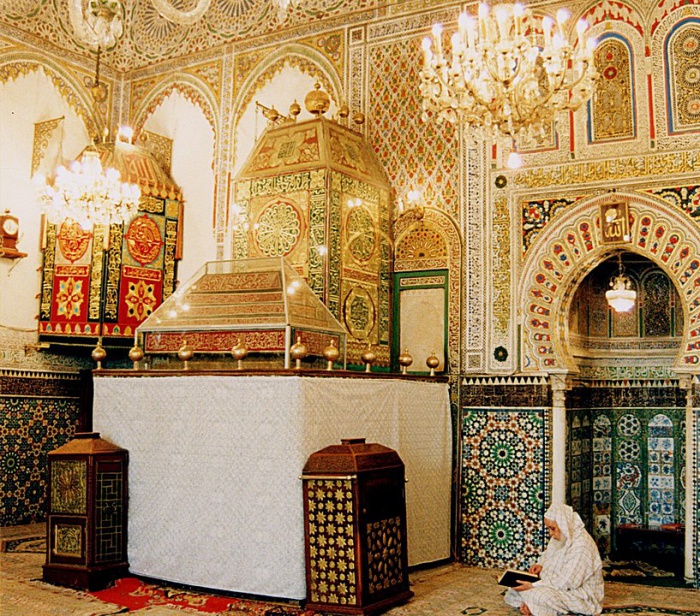
The ruler of Morocco from 807 to 828, Moulay Idriss is considered to be the founder of Fez and its patron saint. According to historians, the building, where there is a mosque and Moulay Idriss’s tomb, was constructed in the IX century. Many people believe that it is a blessed place by visiting it to receive a baraka (blessing).
5. Marinid Tombs
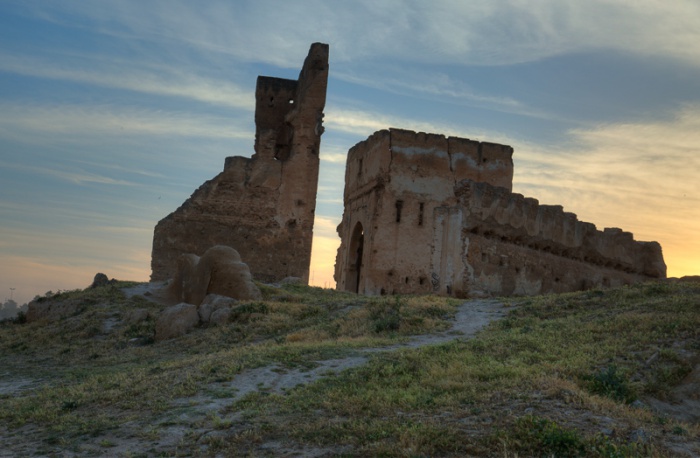
On one of the hilltops, surrounding the Old City, there are tombs of the rulers of the Marinid dynasty. Although there is nothing special in the ruins of the tombs themselves, the view from the hilltop makes it be worth climbing it.
6. The Mosque of Sheikh Ahmad Tijani
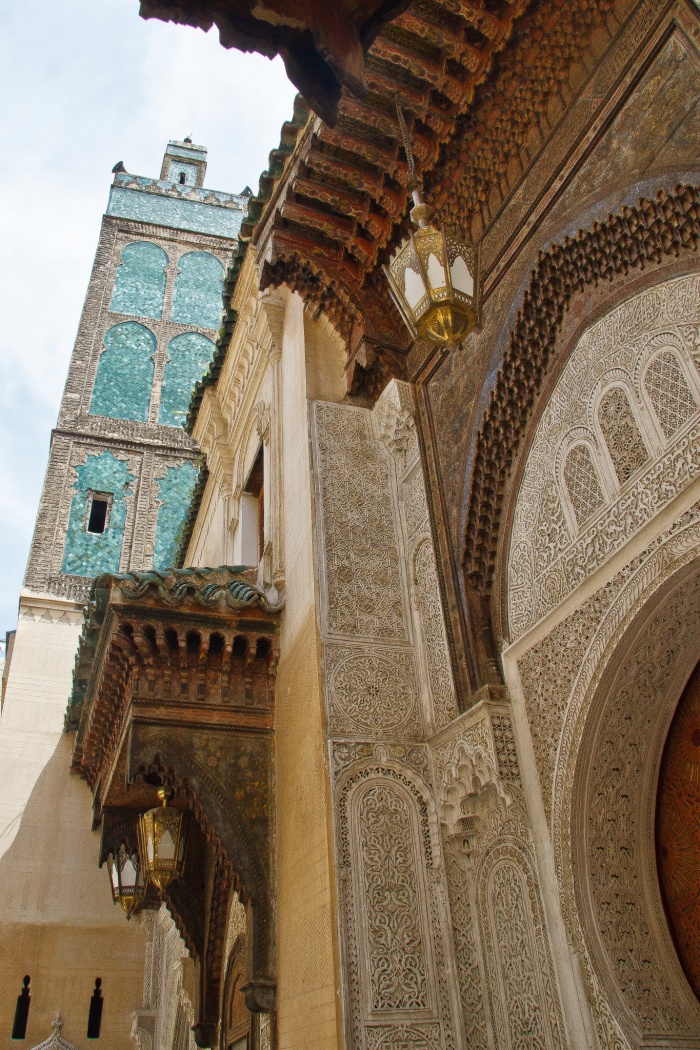
Sheikh Tijani (1735-1815) was a prominent scholar and founder of the Tijani Tariqa (the Sufi order). The mosque named after him has been the meeting place for his students and Tariqa followers. The Sheikh was also buried here. The exterior of the building is very similar to the courtyards of Moroccan madrasahs with glazed tiles and carved stucco and wood.
7. Bou Inania Madrasah
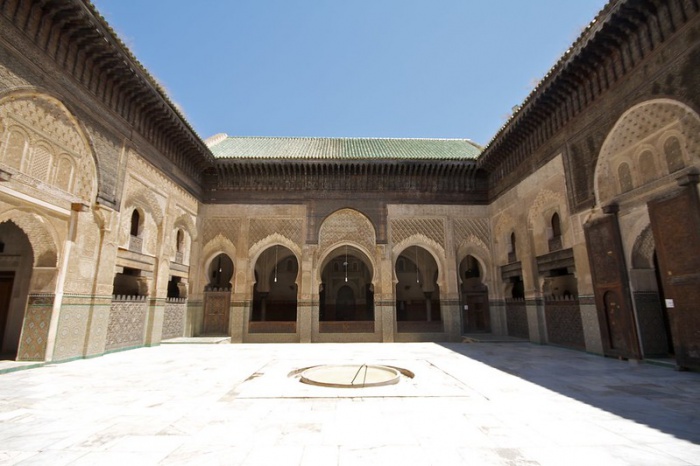
Built by Abu Inan Faris, Sultan of the Marinid dynasty between 1350 and 1357, the madrasah has been extensively renovated over the recent years. Unlike the majority of other Moroccan madrasahs, where there is only a small mosque, Bou Inania is a complete mosque itself, along with its own minaret made of green tiles. Bou Inania, the last madrasah built by the Marinids, has become an important religious institute in Fez and Morocco, in general. The courtyard is decorated with cellius tiles and carved stucco, typical for Moroccan madrasahs and with cedar wood on the tops of walls and ceilings. Arabic calligraphy is everywhere. Opposite the madrasah there is Dar al-Magana, a water clock, also built by Sultan Abu Inan.
Ilmira Gafiyatullina
Photo: Creative Commons
